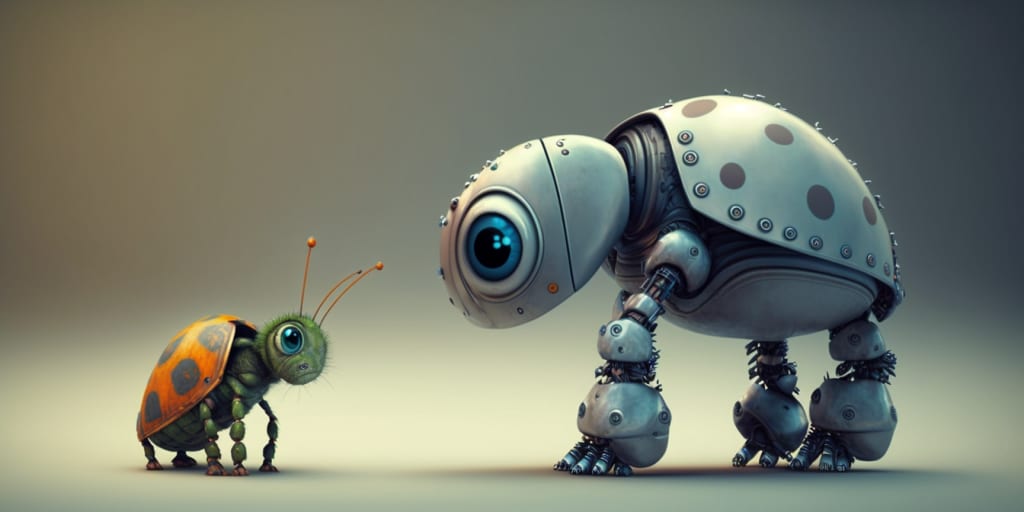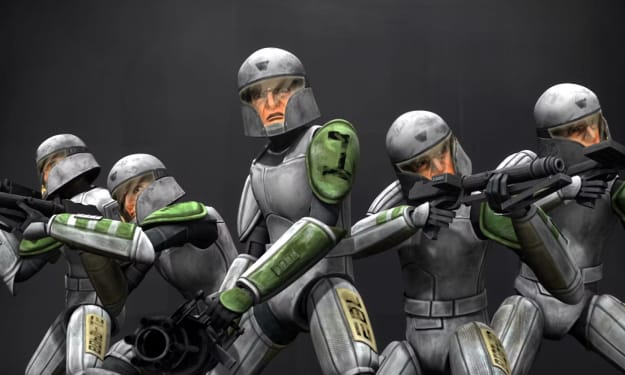What is the difference between AI and robotics?
How does one belong to the other?

In today's technological world, Artificial Intelligence (AI) and Robotics are two terms that are often used interchangeably but they have different meanings. AI is a form of intelligence demonstrated by machines while robotics refers to the engineering discipline dealing with the design, construction, and operation of robots. This article will explain the differences between AI and robotics so readers can gain a better understanding of these sophisticated technologies. We'll explore the underlying concepts, applications, and history to provide an in-depth comparison.
Get to know an overview of AI here.
AI vs Robotics
AI and robotics are two distinct technologies that have gained immense popularity in recent years. Although both these technologies deal with machines, they work on entirely different principles. AI, or artificial intelligence, is a computer system designed to mimic human thinking and decision-making processes. Simply put, a machine can perform tasks that would typically require human intelligence.
On the other hand, robots are machines designed to automate specific tasks without any need for human intervention. They work based on pre-programmed instructions and can perform their assigned tasks repeatedly until instructed otherwise. Unlike AI systems that learn from data inputs and make decisions based on them, robots cannot learn from their environment.
In essence, AI deals with creating intelligent systems that can make decisions similar to humans while robotics focuses on automating repetitive tasks through programmed actions with minimal human involvement. Therefore, both technologies serve different purposes and operate under distinct principles despite sharing similarities in their use of machines as tools for executing specific actions.
Definition of AI
AI, or artificial intelligence, is the simulation of human intelligence in machines that are programmed to think and act like humans. This includes learning, reasoning, perception, problem-solving, and decision-making capabilities. AI systems use a combination of algorithms and data inputs to analyze information and make decisions based on patterns and trends.
On the other hand, robotics involves creating machines capable of performing tasks that are typically done by humans. Robots can be programmed with pre-defined rules or use AI to learn how to perform specific tasks. While both AI and robotics involve developing intelligent machines that can assist humans in various ways, robotics focuses more on physical movement while AI emphasizes cognitive abilities.
In summary, AI refers to the ability of machines to learn from data inputs and perform intelligent tasks such as decision-making without being explicitly programmed every step of the way. Robotics refers specifically to machines designed for physical labor that may incorporate some level of artificial intelligence in their operation but don't necessarily possess any cognitive abilities beyond what they have been programmed with at their creation.
Definition of Robotics
Robotics is a field of engineering and science that deals with the design, construction, operation, and application of robots. A robot is an electro-mechanical device that can be programmed to perform a variety of tasks autonomously or with human intervention. They are typically composed of sensors, actuators, computer processors, power sources, and other components that enable them to perceive their environment and manipulate objects.
While robotics and artificial intelligence (AI) are often used interchangeably, there are distinct differences between the two fields. AI refers to the ability of machines to mimic human cognitive functions such as learning, perception, reasoning, and problem-solving. In contrast, robotics focuses on physical interactions between machines and their surroundings. Robotics technology may incorporate AI algorithms to enable advanced decision-making capabilities but also involves mechanical engineering principles for movement and manipulation.
In summary, while both AI and robotics involve complex technology applications aimed at enhancing automation processes in various industries such as manufacturing or healthcare sectors; AI pertains mainly to software-based systems designed for intelligent decision-making processes while robotics refers specifically to hardware devices designed for physical interaction purposes.
The difference in the Range of Operations
One of the main differences between AI and robotics is in their range of operations. Artificial intelligence is essentially a software-based technology that deals with algorithms, data processing, and decision-making based on large datasets. It can operate over long distances, with data being transferred from one location to another through the cloud or the internet.
In contrast, robotics involves physical machines that interact with their environment through sensors and actuators. Robots are designed to perform specific tasks such as manufacturing or assembly line work, often in confined spaces or hazardous environments where humans cannot safely operate.
While both technologies have different ranges of operation, they can also complement each other. For example, AI can be used to enhance robot performance by providing real-time data analysis for improved decision-making capabilities. The combination of AI and robotics has already shown great promise in fields such as healthcare and transportation, where autonomous robots powered by AI algorithms are being developed to assist doctors and drivers respectively.
The difference between Human or Machine Control
When it comes to controlling, there are significant differences between human and machine abilities. Human control is characterized by cognitive and emotional processes that involve decision-making, judgment, and perception. In contrast, machines rely on algorithms and programmed instructions to execute tasks.
Artificial Intelligence (AI) systems can simulate or enhance certain human abilities such as language processing or memory, but they can't replicate the full range of emotions, intuition, creativity, and common sense that come with human experience. This means that machines need constant supervision to avoid unintended consequences or errors in their operations.
Robotics technology has made significant advancements in recent years with the development of autonomous robots capable of performing complex tasks without direct human input. Still, these robots are limited by their programming and sensor capabilities which make them less adaptable than humans in unpredictable environments.
In conclusion, while AI may be able to perform specific tasks faster than humans once it is trained to do so; it still lacks the ability for independent thought or decision-making beyond what it's been coded for - this is where the difference lies between human-controlled devices versus those controlled by machines.
AI Uses in Robotics
AI and robotics are two different but interconnected fields. Robotics is concerned with the design, construction, operation, and use of robots to perform tasks that would otherwise be difficult or impossible for humans. AI, on the other hand, focuses on creating intelligent machines that can learn from experience and make decisions based on data.
Despite their differences, AI has a significant impact on robotics by enabling robots to become more autonomous and adaptive. For instance, an AI-powered robot can adjust its movements in real time based on sensor data to avoid collisions or obstacles. It can also learn from previous experiences to improve its performance over time.
Moreover, AI also plays a crucial role in enabling robots to communicate with humans more effectively. By using natural language processing (NLP) algorithms, robots can understand human speech and respond accordingly. This feature is particularly beneficial in applications such as customer service where robots can assist human agents in answering inquiries.
In conclusion, AI is an essential component of modern robotics as it enables robots to become smarter and more versatile than ever before. With continued advancements in both fields, we can expect even greater innovation in the coming years as we explore new ways of integrating these technologies into our daily lives.
Conclusion: AI & Robotics Interconnected
In conclusion, AI and robotics are interconnected. While AI focuses on creating intelligent machines that can learn from experience and perform human-like tasks, robotics focuses on creating physical machines that can automate processes.
These two fields of technology work hand in hand to create advanced robotic systems capable of performing complex tasks. For instance, an autonomous car relies on both AI and robotics to function effectively. The car's sensors use AI algorithms to analyze the environment and make decisions while the physical components such as motors, wheels, and brakes are controlled by robotic systems.
In summary, the integration of AI and Robotics will continue to revolutionize industries such as manufacturing, healthcare, and transportation among others. The future holds unlimited possibilities for these technologies as they continue to evolve towards smarter machines capable of performing more intricate tasks with minimal human intervention.
About the Creator
Patrick Dihr
I'm a AI enthusiast and interested in all that the future might bring. But I am definitely not blindly relying on AI and that's why I also ask critical questions. The earlier I use the tools the better I am prepared for what is comming.






Comments
There are no comments for this story
Be the first to respond and start the conversation.